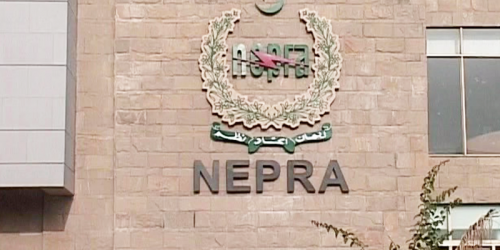ISLAMABAD: As unannounced power cuts continued for the third consecutive day almost across the country, the government on Wednesday confirmed supply shortfalls in the system due to technical reasons despite surplus generation capacity.
The National Electric Power Regulatory Authority (Nepra) took serious notice of the excessive loadshedding and sought explanation from power distribution companies (Discos), including K-Electric.
Minister for Energy Hammad Azhar, on the other hand, said the shortage was caused by ‘outages’ of some thermal power plants and insufficient supply from Tarbela Dam due to lower water availability.
Officials said electricity and gas shortages were anticipated to aggravate in the coming days.
Sources in the Power Division said a few thermal plants could not be operated despite peak demand of the year due to gas shortage caused by cancellation of an LNG vessel by Pakistan LNG Limited at the last moment due to higher price and had a bearing of about 150mmcfd (million cubic feet per day) in the system.
As a result, a number of gas-fired plants, including Muzaffargarh, Faisalabad, Orient, Saif, Halmore and Altern Power, could not be provided gas and they remained mostly out of the grid, while three mega LNG-based plants — Haveli Bahadur Shah, Balloki and Bhikki — besides Kapco and Fauji Kabirwala had to be operated at significantly lower capacity.
The sources said that while the gas shortage was bridged through alternative means in the short-term, a host of challenges were lining up during the current month from the fuel supply side. A partial recovery in the system is, however, anticipated from better water availability over the next few days that would improve power generation.
The sources said a gas field of Hungarian firm MOL was scheduled to go on annual turnaround (ATA) on June 16-17 that would reduce domestic gas supply by 120-140mmcfd. This would be followed by even a greater crisis anticipated to emerge on June 29 due to non-availability of Engro Elengy Terminal that would impact gas supply for a week. The company has already given a notice for dry-docking, a term used for maintenance of terminal, starting June 29.
This means gas shortfall on this account would range between 300 and 650mmcfd and negatively impact not only the power sector but also other sectors. The sources said the company had been delaying the dry-docking of terminal for almost two years, but unfortunately it had scheduled a final maintenance at the peak of power demand in June.
Meanwhile, complaints of power outages due to tripping and loadshedding have poured in from across the country since Monday. The Power Division officially confirmed that there was a power shortage to the extent of 1,000-1,500MW over the past three days and attributed it to 3,300MW lower supply from Tarbela Dam.
Nepra said it had “taken serious notice of excessive loadshedding faced by the consumers throughout Pakistan” who were “suffering heavily in the simmering heat”.
The power regulator reminded that loadshedding was taking place even though all Discos, including K-Electric, were obligated under the relevant provisions of their licences to provide uninterrupted and reliable power supply to the consumers.
Therefore, to explore the actual reasons and address the situation, Nepra had directed the chief executive officers of all Discos and KE to appear before it on Friday (June 11). The CEOs would be required to explain the actual causes of shortfalls and breakdowns and remedial measures taken by them to eliminate the excessive loadshedding.
Energy Minister Azhar said in a recorded statement that the country was facing loadshedding for 48 hours for various reasons, including non-availability of 3,300MW from Tarbela Dam because of maintenance, which would be available in three to four days. Also, there were some other technical outages and some plants went out of the system.
The minister said the reason for this shortfall was not capacity issue; capacity was surplus in the system all the time that could not be utilised for most part of the year and yet capacity payments had to be made.
A senior official said the PTI government had been putting the installed capacity at about 34,000MW of which available capacity stood at about 29,000MW after adjusting for de-rated capacity that was not available for use. After accounting for non-availability of 3,300MW from Tarbela Dam, the system should still have about 26,000MW in the system.
This means about 3,000-4,000MW was not available for supply to the grid when it was required the most and hence the government should look into the issue of capacity payments. “This capacity was purportedly available for capacity payments throughout the year but not available for consumption in peak demand, then something is very seriously wrong,” the official said.
The Power Division said the total demand in the middle of the day stood at about 24,100MW on Wednesday, but power generation stood at 22,600MW, leaving a shortfall of 1,500MW. It regretted the inconvenience and appealed to the consumers to show moderation in power consumption.







